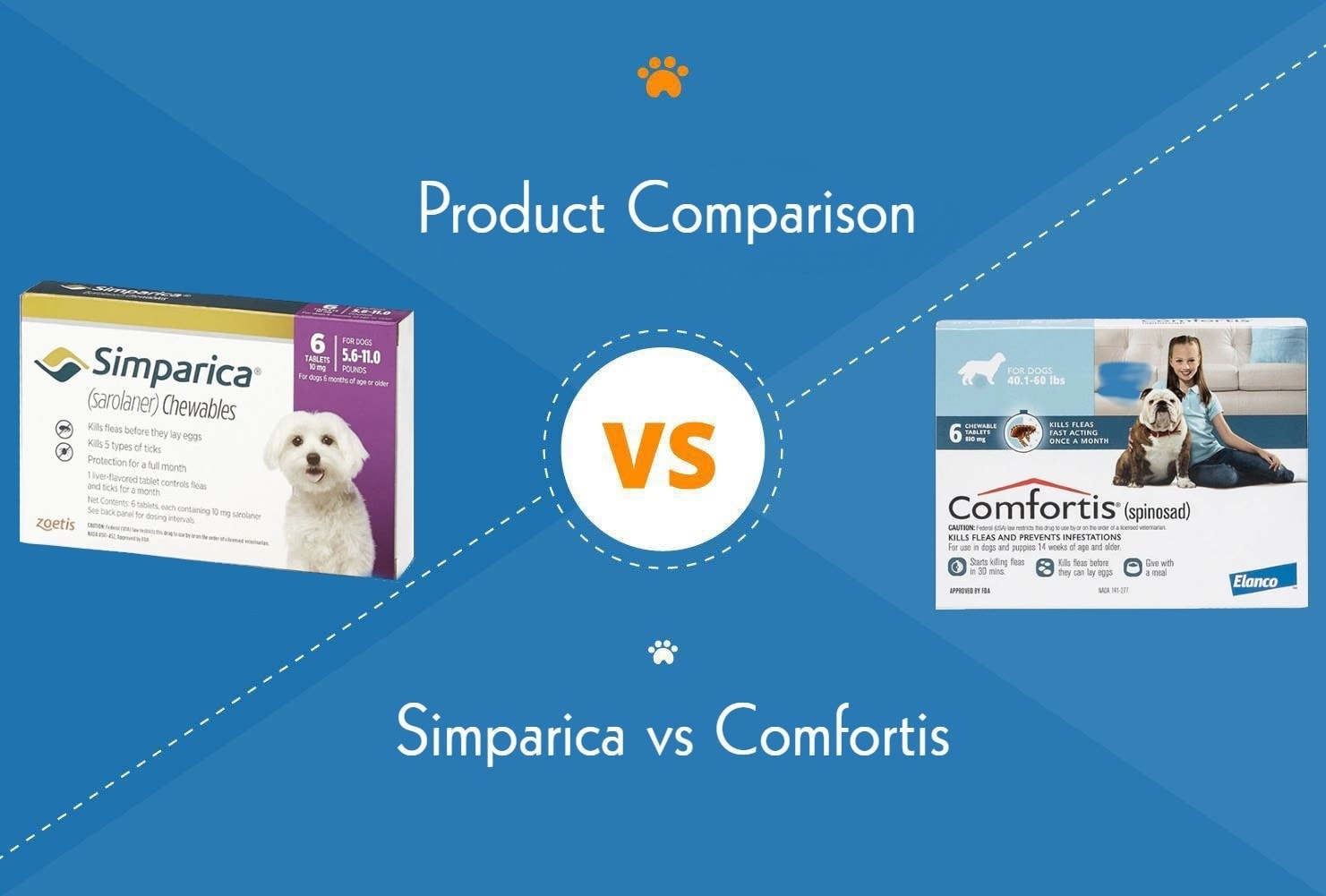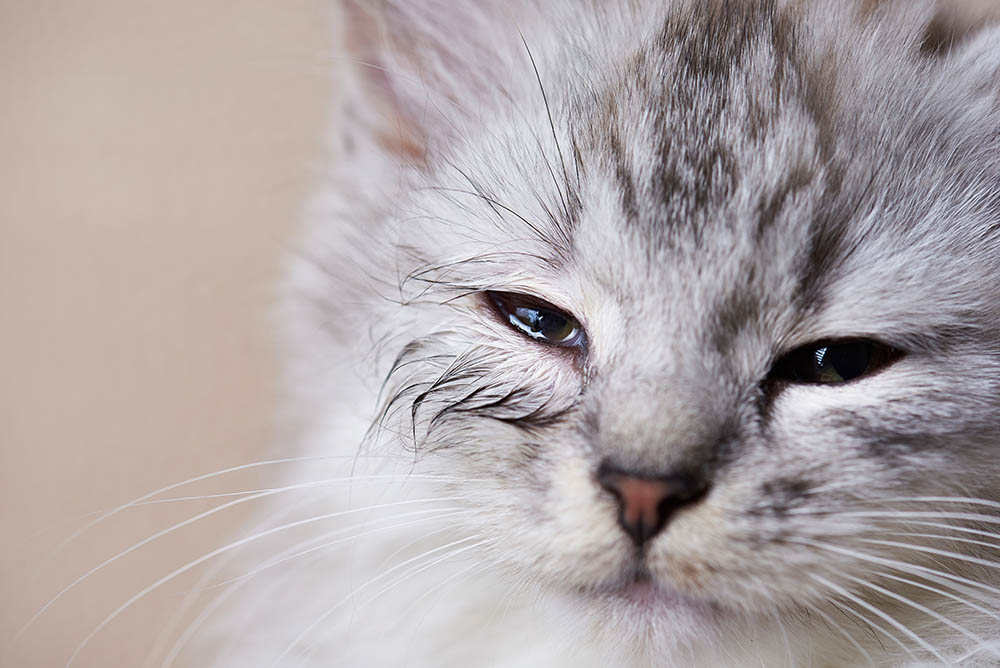Vaginitis in Dogs: Causes, Signs & Treatment (Vet Answer)
Updated on
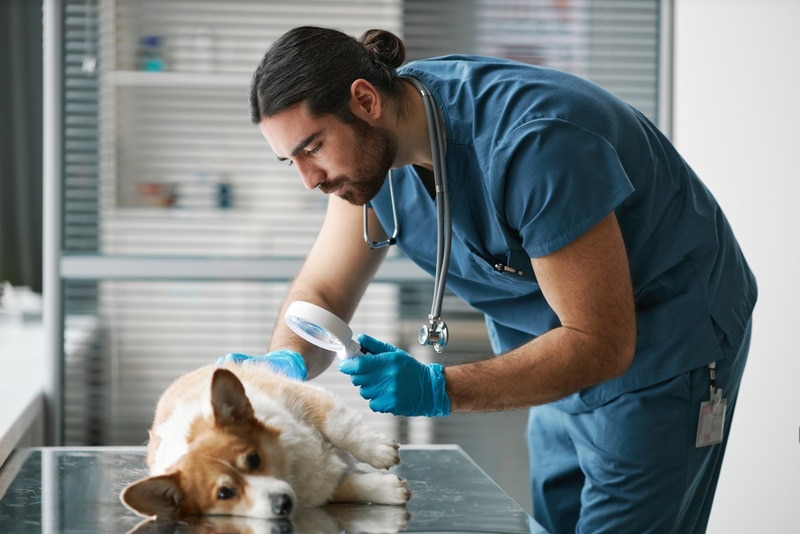
Click to Skip Ahead
Vaginitis is inflammation of the vagina—more precisely, of the vaginal mucous membrane. Vaginitis in dogs is not fully understood by scientists. There is usually a predisposing factor that causes urine or fecal contamination of the area.
It can occur in adult female dogs and young female dogs (before first estrus), where it is called juvenile vaginitis. This condition has no age or breed predisposition; any dog breed can be affected at some point in their life. The clinical signs are represented by white to yellow vaginal secretions, with an unpleasant odor (if complications occur), increased frequency of urination, and excessive licking of the vulva to the point of irritation.
In this article, learn what vaginitis in dogs is, its clinical signs and causes, how to care for a dog with vaginitis, and more.
What Is Vaginitis in Dogs?
Vaginitis is an inflammatory condition of the vaginal mucosa, which causes the occurrence of vaginal secretions that are associated with disturbing clinical signs that can cause affected dogs to lick and chew their genitals excessively.
This condition can occur in any female, regardless of age and breed. It can also occur in intact females, though it is more common in spayed adult females. In puppies under 1 year of age, the condition typically resolves after their first heat cycle.
What Are the Signs of Vaginitis in Dogs?
Uncomplicated vaginitis (i.e., a mild form) is often discovered by the veterinarian during a routine check-up. The clinical signs may not be obvious.
- Vaginal discharge with the consistency of white to yellow mucus
- Licking excessively of the genitals (vulvar area and vaginal opening)
- Scooting and rubbing of the vulvar area
- Mild irritation of the skin in the vulvar area (due to licking, rubbing, or scooting)
- Attraction of male dogs (some males are more attracted to females that suffer from vaginitis)
- Frequent urination
- Purulent or bloody vaginal discharge (in rare cases)
- Red and swollen vulva
Dogs suffering from vaginitis usually appear healthy in that they eat and drink water normally, have the same level of activity, and are happy. So, if your dog becomes lethargic, stops eating or drinking water, or vomits, consult your veterinarian as soon as possible.
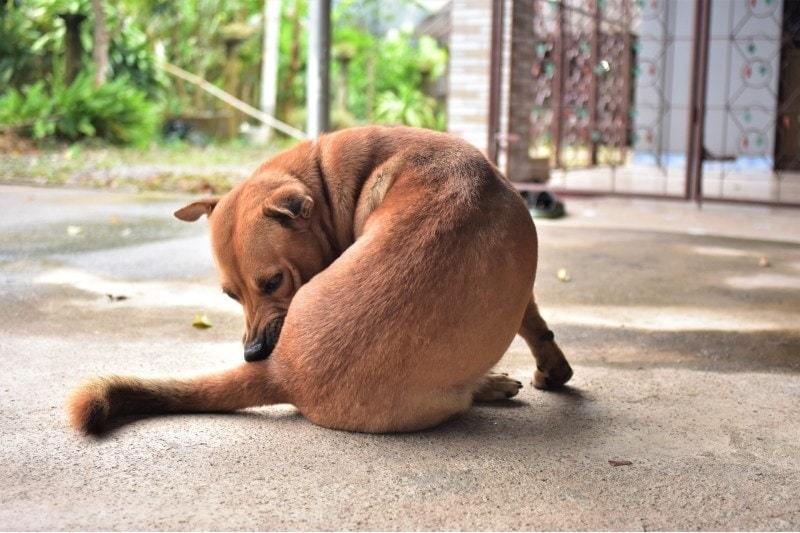
What Are the Causes of Vaginitis in Dogs?
Vaginitis in dogs has numerous causes.
- Hormonal imbalances (hyper- or hypoestrogenism, the most common cause of vaginitis in young dogs, often occurring before the first heat cycle)
- Obesity (bacteria and moisture can be retained in the extra folds of skin and tissue, causing irritation)
- Urinary tract infections
- Urinary incontinence
- Canine herpesvirus
- Bacterial contamination (for example, with feces)
- Congenital anomalies, such as ectopic ureter
- Foreign bodies (dust or dirt)
- Vaginal injuries
- Inappropriate use of antibiotics (the normal microflora of the vagina is interrupted)
- Vaginal hematomas or abscesses
- Tumors
How Is Vaginitis in Dogs Diagnosed?
If you suspect that your beloved four-legged friend may be suffering from vaginitis, it is best for a veterinarian to examine them. Most of the time, mild forms of vaginitis are diagnosed incidentally during routine medical check-ups.
In the case of juvenile vaginitis, the clinical signs, test results, and age of the puppy will establish the diagnosis. In adult dogs, the diagnosis of vaginitis is based on clinical signs and your dog’s medical history. Additional tests can help diagnose vaginitis.
- Vaginoscopy
- Cytological tests (a sample will be taken from your dog’s vagina and examined under a microscope)
- Blood tests
- Urine tests to check if there is a urinary tract infection
- Urine culture and sensitivity to antibiotics
- Bacterial cultures from vaginal secretion (these will identify unusual numbers or types of bacteria that indicate a bacterial infection that requires antibiotic therapy)
Also, to exclude anatomical anomalies, ultrasounds, and radiographs with contrast can be recommended.
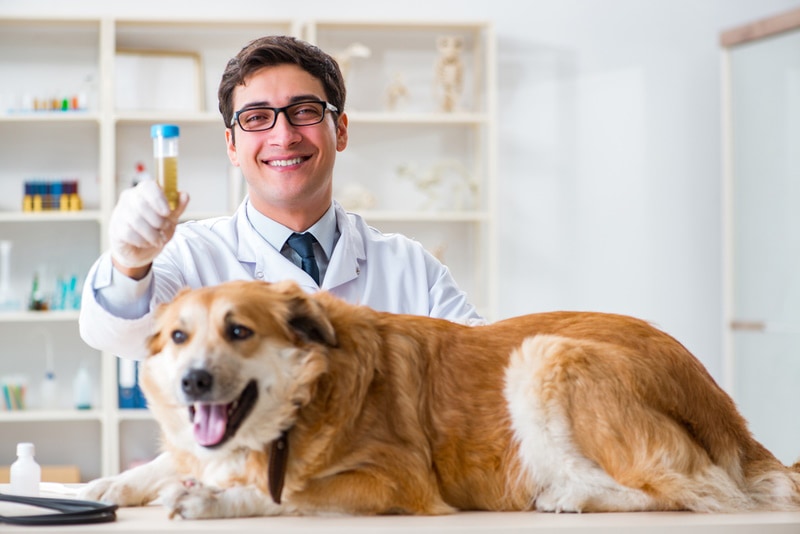
How Is Vaginitis in Dogs Treated?
In young puppies, vaginitis does not usually need medical treatment, resolving on its own after the first heat cycle. For adult dogs, vaginitis can only be treated by a veterinarian.
- Daily cleaning of the vulva (in mild forms of vaginitis) — You can use wet baby wipes without perfume or alcohol, wet wipes for pets, or cleaning solutions. The goal is to keep the area clean and free of discharge to reduce irritation.
- Vaginal douches — Use chlorhexidine or povidone-iodine solutions twice a day.
- Oral antibiotics — You can use wet baby wipes without perfume or alcohol, wet wipes for pets, or cleaning solutions. The goal is to keep the area clean and free of discharge to reduce irritation. Chlorhexidine or povidone-iodine solutions twice a day can be helpful.
- Treatment for the underlying condition that led to vaginitis (if necessary) — These treatments can complement each other or vary widely.
Some dogs may groom the genital area excessively. For this reason, your veterinarian may recommend an Elizabethan collar (e-collar or pet cone) for your pet in order to prevent inflammation and subsequent infections.
How Do I Care For a Dog With Vaginitis?
Here’s what you can do to take care of your dog with vaginitis and prevent this condition in the future:
- Follow the instructions and treatment recommended by the vet.
- Keep your dog away from males that are attracted to your pet to prevent complications and delay healing; some males are more attracted to females with vaginitis.
- Keep the genital area clean and dry.
- Keep your dog in proper hygiene conditions.
- Provide quality food for a strong immune system.

Frequently Asked Questions (FAQ)
Is Vaginitis in Dogs Painful?
Vaginitis can be painful, irritating, and uncomfortable for dogs. Frequent licking can worsen the situation, leading to more severe clinical signs. Contact the veterinarian if you notice swelling and irritation of the vulva, abundant secretions, or signs of discomfort.
Can a Dog With Vaginitis Be Bred?
Dogs with vaginitis may or may not be bred, depending on the cause of the condition. For example, females diagnosed with bacterial vaginitis caused by the bacterium Brucella canis should not reproduce. They can suffer from infertility or spontaneous abortion, and males can become infected by the female (the primary route of transmission of B. canis is through sexual contact). It is recommended not to breed dogs suffering from vaginitis until they heal, as the clinical signs may worsen and the recovery may be delayed.
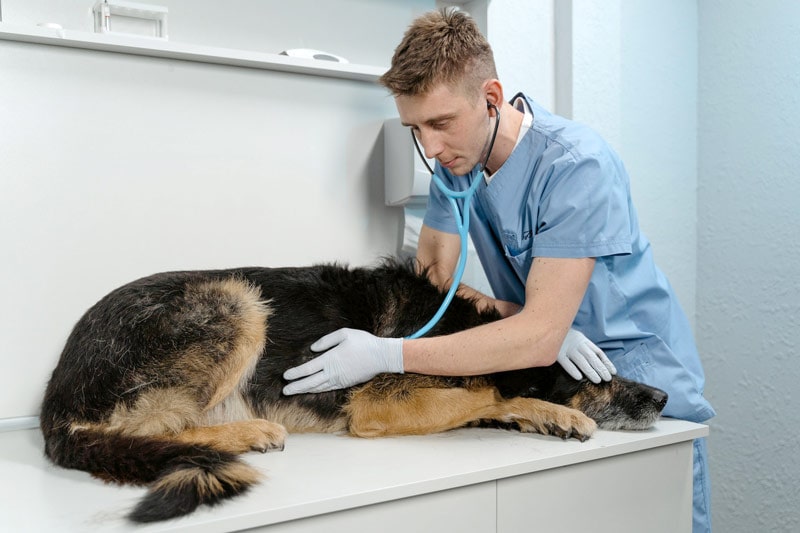
Conclusion
Vaginitis in dogs is a fairly common condition, especially in young dogs that have not gone through their first heat cycle. In these pets, once the first heat cycle has passed, the vaginitis will resolve on its own. The causes are mostly hormonal, but predisposing factors like infections, trauma, foreign bodies, or cancer can also lead to this condition. Clinical signs include yellow-white vaginal secretions and excessive licking of the vulvar area. Vaginitis is not a life-threatening condition (unless it becomes complicated) and can successfully be treated by taking antibiotics, cleaning the vulvar area daily, and addressing the underlying cause.
Featured Image Credit: SeventyFour, Shutterstock



